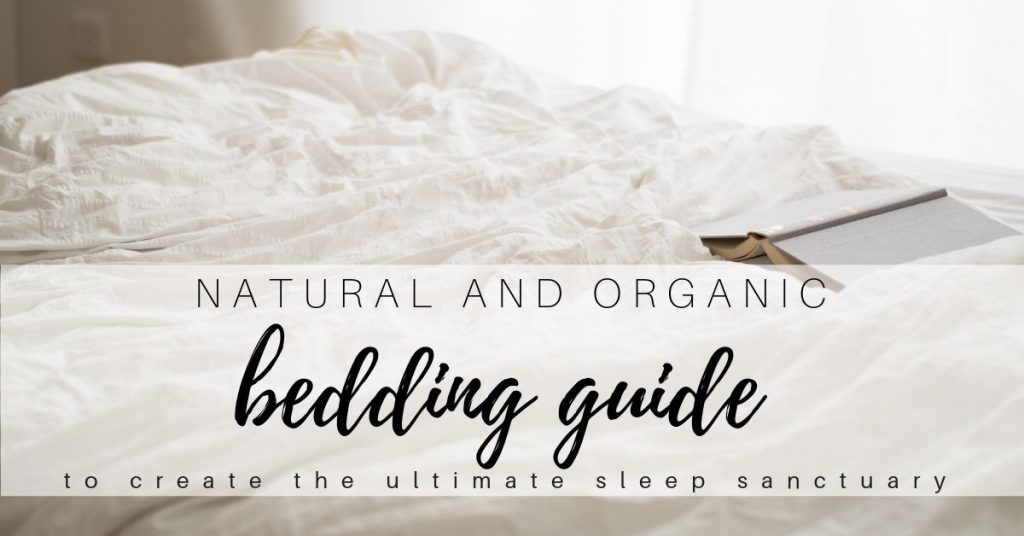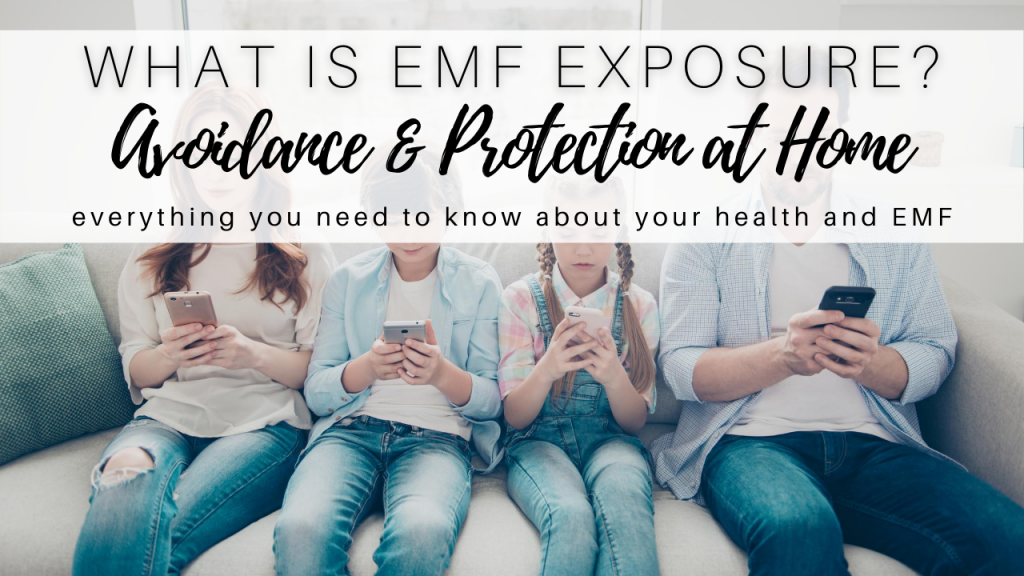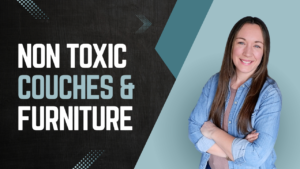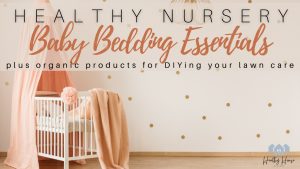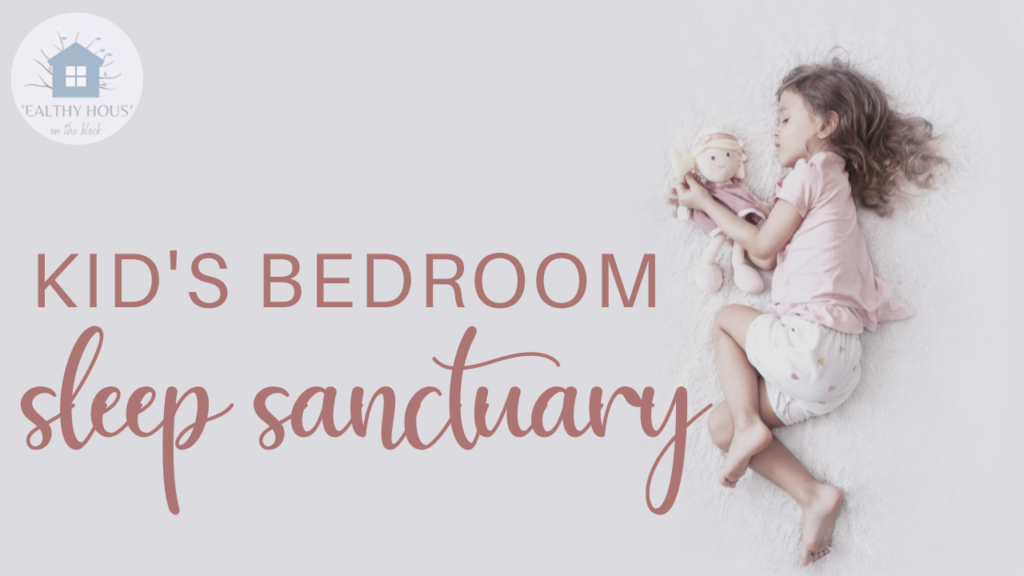
Sleep is a vital part of a child’s life and it’s one of the largest contributors to a healthy life. If you’re a parent or even if you’ve been around babies and kids, you know that a well rested child is often happier and less irritable. But what is the best way to fall asleep for kids? Sleep comes easy for some children and for others it can be a bit more of a challenge. But what if the reason for some sleep issues simply came from a poor sleep environment? What if the way we took care of our house and in particular, our child’s room so that the room was conducive to sleep?
There are the obvious ways to make a room a better place to sleep (which will also give kids the tools for the best way to sleep); the same ways that are laid out in every parenting magazine when it comes to the topic. But there are also ways to improve the environment in a room that go unnoticed. The study of the home as a contributor to our health is known as building biology. Building biology as a whole is the idea of creating a home that acts as a third protective barrier from the chemicals and toxins in the world. The second barrier from the world is our clothing and our first protective barrier is our skin.
The amount of time a child spends in their room the first few years of their life is often just as much as the time they spend out of their room. This is just one more reason that a healthy environment within their bedroom is so vital to their health. A room filled with chemical toxins, organic growth and bacteria is obviously not a place we want our children. The problem is many of these places that contain bacteria, chemical toxins and organic toxins are not well known. Parents and grandparents looking to create a healthy space often have to seek out the information.
Not all these solutions will be viable for every family, but changing even one of these things in your child’s room will help improve the indoor air quality and environment of the room. Taking action and taking one step forward will make a difference and will improve the health of the room. I know that I’m all about finding the best way to fall asleep when my kids are involved!
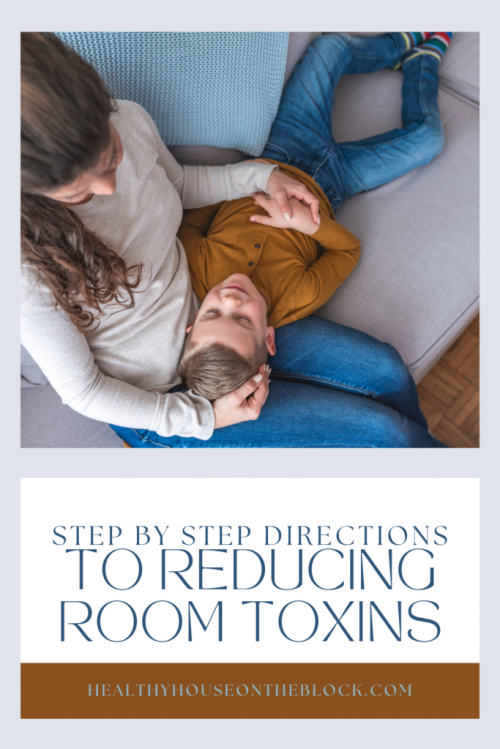
Reducing Chemical Toxins as the Best Way To Fall Asleep
This is probably the largest contributor to a room’s health. Unfortunately in our modern society, this is also an issue that gets ignored. Unhealthy chemicals can end up being in just about every product and material around the home. While this can be alarming and a bit overwhelming to hear, there are simple ways we as parents can take steps in the right direction. First and foremost, let’s take a look around the room. Carpet is a huge culprit when it comes to a healthy environment. Not only is carpet made with synthetic fibers, but these fibers are embedded with chemicals like Formaldehyde to improve the life of the carpet. Carpet also contains chemicals like perfluorochemicals to repel water and stains. These two chemicals alone are known carcinogens and generally unsafe for living things.

Carpet is also a spot for dust to collect, which harbors dust mites. These dust mites are not only gross, but they produce an allergic response in many children and adults. Dust mites can be extremely difficult to completely eradicate and with carpet, it can be even more difficult. Carpet also increases the moisture in our homes. Carpet holds moisture in the fibers and can even end up producing mold and mildew in the carpet pad below. This can be irritating to some individuals and can also create an unhealthy indoor environment. If removing carpet is an option for your child’s room, I highly recommend it. If removal is not an option, there are ways you can take to minimize the chemicals and organic toxins in the carpet.
Get ALL the information you need about toxin free carpeting for your home in this post ———–>
Bedding & Mattresses
A child can sleep in their bed for anywhere from 10 – 14 hours a night depending on their age and needs. Imagine laying with your face in close proximity to a chemical for 10 – 14 hours a day, every day, for years at a time. This thought is horrible! But the good news is there are so many toxin free options for mattresses, bedding and sheets now that this problem could be completely eradicated.
First, let’s talk mattresses. This is a huge contributor to sleep or lack of sleep for many of us. Children need a firm, but comfortable mattress. A mattress made of organic wool is naturally flame resistant and will not add any addition chemicals to your child’s room. When shopping for a mattress opt for one that is GOTS certified or one that uses 100% organic materials. When you get the mattress, even if it is organic, allow it to off-gas outdoors or in a garage for at least 24-48 hours before allowing your child to sleep on it.
Once you’ve got the mattress figured out, make sure you don’t cover it with sheets, protective covers or bedding laden with chemicals. This means purchasing bedding that is 100% certified organic. Cotton is your best bet as it’s breathable and can dry out rather quickly. Bamboo sheets and fabrics should be avoided as there is a harsh chemical processed used to make bamboo into soft fabrics.
Chemicals within sheets can contribute to sleep by creating respiratory irritations and affecting the brain, activating it and preventing it from calming into sleep mode. These same chemicals can cause skin irritation as well, which can prohibit a comfortable night’s sleep.
Once you get your sheets or mattress protectors, make sure you wash them in an all natural soap. I love plant based Dropps in order to make sure no chemicals are getting embedded into the fabrics. It’s also safe for those with the most sensitive skin — definitely a game changer when it comes to finding the best way to fall asleep for kids.

Click the Images Below for Great Posts About Bedding and Mattresses
Electronics
Electronics are in every room, no matter how much we don’t want them there. Kids sleep with music, white noise, monitors and nightlights, so it can be nearly impossible to try and remove all electronics. Most parents haven’t the slightest idea that these electronics can actually be extremely disruptive to not only sleep patterns, but the ability to calm the mind and fall asleep.
Our bodies detect electronics and electric fields as a stressor on the body. This puts the brain into a high defense mode, which is not a conducive to falling asleep. It’s the exact opposite of the best way to fall asleep for kids as it is so disruptive to their natural state.
With this in mind, using the right kind of electronics and the correct placement in the room could make all the difference. From personal experience, the minute the monitor was moved away from my daughter’s crib, she began falling asleep easier and seemed to have fewer night wakings. It was something I had never thought would be the best way to fall asleep for her, but it worked wonders.
Light & Color
Obviously one of the best ways to encourage sleep is to have a darkened room. Our bodies detect dark as a time to naturally sleep. Blackout shades or drapes will be your best friend when it comes to darkening a room. I recommend opting for shades and drapes that are made from 100% natural materials such as cotton, linen, and wood. It’s best to stay away from window treatments that contain PVC or fire retardants. Formaldehyde can also be added to fabrics on blackout shades, which is another problematic chemical we want to avoid.
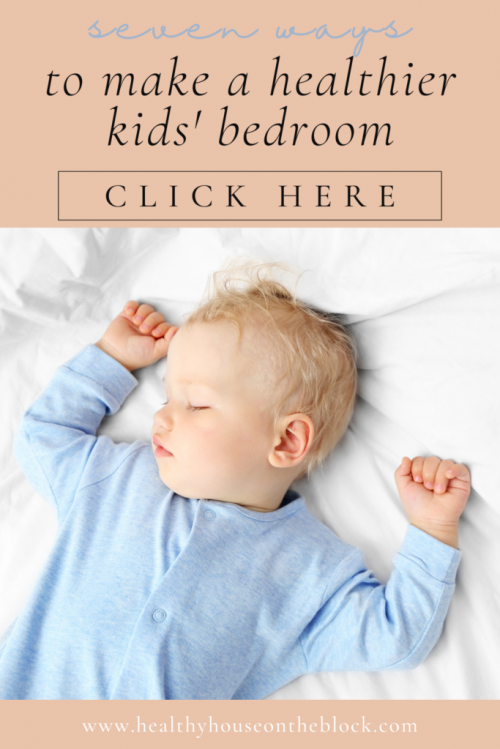
Window treatments that block out light will also help keep the room cool by blocking UV rays and insulating the room a bit more. Below are some of the safe brands and options to explore if you’re adding window treatments to a room.
My Favorite Low Toxin Shade Options:
When it comes to color, believe it or not, it plays a part in the sleep of our kids, and even us as adults. The color a bedroom is painted can leave you feeling calmed and relaxed, or it can leave you feeling excited, or angry or soothed. This is why many nurseries are soft, calming colors. A bright, cheerful room may be great for a play area, but when it comes to sleeping, it may not be ideal.
Colors that are more neutral help create a calm and soothing environment. Especially those neutrals with shades of blues, grays or greens. Warm-toned colors like pink, yellow and red are not ideal for bedrooms as they can cause a more excited feeling and prevent the brain from calming down.

Ditch Synthetic Fragrances
Keeping as many odors out of the room as possible will help keep chemicals out of the room as well. Opt for products that are free of added scents, fragrance free or 100% organic. Any sort of room freshener that is not 100% natural and organic should be avoided as well. This includes Febreeze, Glade Plugins, Airwick, and other scented sprays and plug ins.
If scent is particularly important or you want to try a non-toxic option, I recommend essential oils and a diffuser as a great alternative. They are all-natural and instead of adding chemicals to the air, they can actually support the immune system and support other systems in the body. You’ll want to really do your research, however, before putting any blend of oils in your kids’ rooms. Some oils are not safe for children or for pets, even if they are fine to be diffused around adults.
Unclutter for The Best Way To Fall Asleep
Stuff, stuff, stuff. If you’re anything like my family you’ve got more stuff than you know what to do with. Stuffed animals, picture frames, toys, decor. Kids’ rooms often become the catch-all for toys and gifts of all kinds. A cluttered, busy area or room, however is not the best room to try to sleep in. These areas don’t allow the mind to calm and keep children in a state of alertness.
Decluttering and getting rid of unused toys and especially stuffed animals, is a great place to start. Stuffed animals often harbor dustmites and can be nearly impossible to clean. I work hard to try and limit the number of stuffed animals and plush toys in our house unless they can be washed on a regular basis.

Getting rid of stuff that is not important and creating an almost minimalist kids’ room is a great approach to keeping the room free of dust collecting items and creating a calm and soothing room.
Anything that can’t get donated can be put away and out of sight. Baskets are a great way to keep books and toys out of sight to create an uncluttered and peaceful space for your child.
This post about organizing your spaces without plastic will give you so many ideas and solutions to everyday storage problems
BONUS: FURNITURE
Excerpt from my online course Healthy Nursery Happy Baby:
One of the largest purchases for your infant will be bedroom and nursery furniture. This can also be a large source of toxins that never fully dissipate from your child’s room. Furniture can come in many different materials and with many different solvents, glues, paints and finishes.
Because of this, it can feel overwhelming to know exactly what to purchase for your child. The great news is that it doesn’t need to feel confusing or overwhelming. By getting back to the basics of furniture and choosing a product made with the simplest materials, you can ensure that your child is safe in a room free of toxins.
This goes from any type of furniture. From the rocking chair to the changing table, the dresser to the nightstand, the furniture in your nursery will play a large part in the indoor air quality. One greatest ways to ensure you are picking healthy furniture is to look at what the furniture is made of.
SOLID WOOD: Products made of solid wood are by far the best option when it comes to any type furniture. Solid wood furniture is not only friendlier to our environment, but it also reduces the introduction of solvents and glues that manufactured wood uses.
Solid wood requires very little in terms of chemicals and solvents. Most wood will have a stain and finish, but so long as these are made from natural, no-VOC products, your nursery will remain in a healthy state.
Materials you will want to avoid when it comes to furniture are furniture pieces made with manufactured wood, particleboard and medium density fiberboard.
These products usually use a glue to hold the particles of wood together. The glue that is used often times contains formaldehyde, which has been linked to an increased risk in cancer as well as asthma and learning disabilities.
When researching the type of furniture you will want to make sure it is made of solid wood.
PURCHASING SOLID WOOD: Most furniture companies that use VOC free products in finishing their pieces will advertise this. Somewhere on the furniture, website or box it will state VOC Free. However this does not mean it is free of all harmful solvents. Thankfully, there are third party certifications that furniture brands can earn in order to meet healthier standards
GreenSeal
GreenGuard
Thankfully there are more and more furniture companies emerging with VOC-free lines of furniture. The more we find out about the danger of VOCs and the more that information is broadcast to the public, the more safe furniture pieces will be made. Below are some furniture brands that have made an effort to be safe and healthy to put in your baby’s nursery.
MATERIALS TO AVOID: Plastics: Plastic should be avoided wherever possible. Plastics are made with a chemical called polyvinyl chloride, which is made with chlorine. This chlorine production releases dioxin into the air, which most researchers have deemed unsafe for humans.
Particleboard or Medium Density Fiberboard: These two materials, while wildly popular, are made with glues. This glue is what holds the particles of wood together and most often it contains formaldehyde. The formaldehyde never stops off-gassing into the room. In fact, the warmer the room and the older the product, the more formaldehyde can be present.
UPHOLSTERED FURNITURE: Upholstered furniture has even more to consider when it comes to purchasing a healthy addition for your nursery. Not only is there most likely wood SOMEWHERE inside the chair, but there is also foam and fabric on the chair as well.
Again, you will want to make sure the wood present is SOLID wood and stained, sealed or painted with something completely natural and VOC free. You can usually find this out by contacting the manufacturer directly.
FOAM: If the upholstered piece you will be puting into your nursery was made or purchased before 2005, you may want to choose a different option.
Foam in couches and chairs prior to 2004/2005 contains chemical flame retardants that emit harmful toxins into the air. These flame retardants (Polybrominated diphenyl, or PBDE for short) are another example of a toxin that builds up within our bodies. These chemicals can result in irreversible damage to the nervous system and reproductive systems. The chemical can also mimic and disrupt thyroid hormones.
The medical studies can be particularly disturbing when it comes to children. A study out of University of California, Berkeley found that PBDE exposure to children were associated with neurodevelopmental delays. This includes decreased attention, fine motor coordination and cognition in school-age children.
Because the chemical is within the foam, it easily leach out into the room where they can accumulate into dust. They can also be present within the air of your nursery where your child sleeps and plays.
Chemical flame retardants also produce toxic gas into the air at an accelerated rate when their surface is warm or surrounded by higher humidity. This means anytime you or child sits on the furniture, the warmth and moisture from your body or their body will create an environment for the PBDE to release a greater amount of toxic gas into the air.
FORMALDEHYDE: Formaldehyde is typically added to the top, most outer layer of furniture as it used to provide a “wrinkle free” textile. We know that formaldehyde is carcinogenic and extremely dangerous to children and their development.
Finding a product that is covered 100% organic cotton or other organic textile will help ensure it is free from formaldehyde.
Formaldehyde is a toxin that off-gasses into the air and when in a warm and humid environment off-gasses at a much higher rate. Trying to avoid this toxin wherever you can is an excellent way to keep from polluting the indoor air for your child. Furniture can be a large surface area where formaldehyde can be present, and so avoiding it can be a great way to keep the room healthy and safe for your baby.
HOW TO AVOID THESE CHEMICALS: If you’re purchasing your furniture, check with the manufacturer and make sure you ask specific questions about foam containing PBDE or chemical flame retardants as well as the use of chemicals and formaldehyde on the outer fabric. Most furniture companies that DO NOT use them will advertise this fact on their website or somewhere on their furniture.
If you are purchasing second hand furniture, I encourage you to have the foam and fabric replaced with 100% organic, safe products. You can do this yourself or by finding a local upholstery shop that specializes in natural, organic upholstery. Either way, you’ll be doing a little bit of research in order to make the furniture free of flame retardants and formaldehyde.
WITH ANY FURNITURE: It is important to remember with ANY furniture you bring into your nursery that you must allow ample time for the product to air out. Even if you’ve purchased a 100% certified organic rocking chair, there can be a chance that your chair was shipped in a truck with other chemical-laden products or furniture.
Allow the furniture to sit in your nursery with either the windows open or the room highly ventilated to allow your new furniture to off-gas and air out naturally before your bring your baby home.




